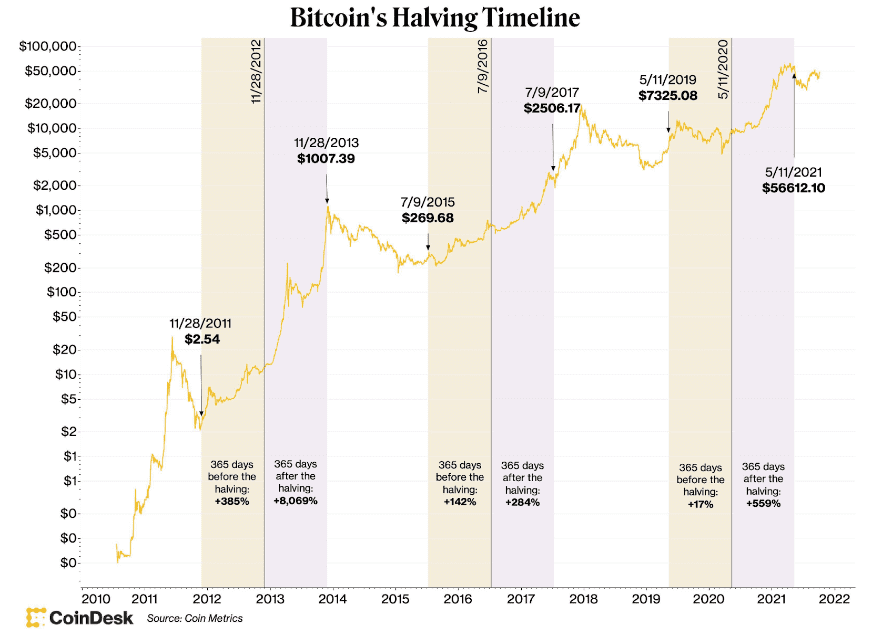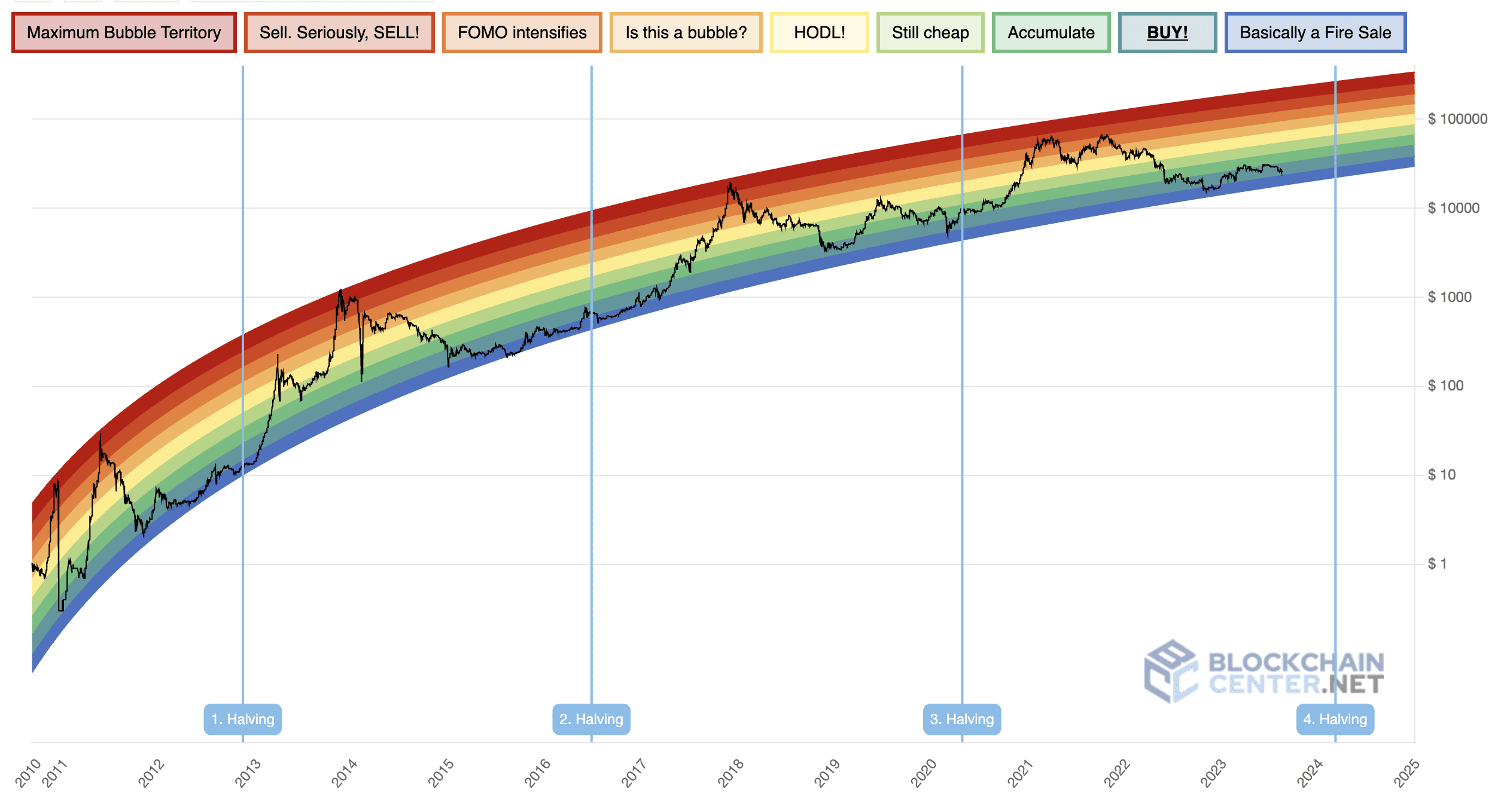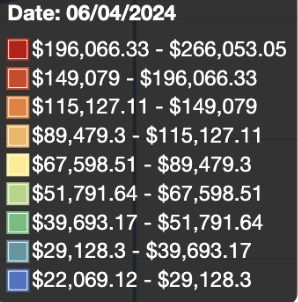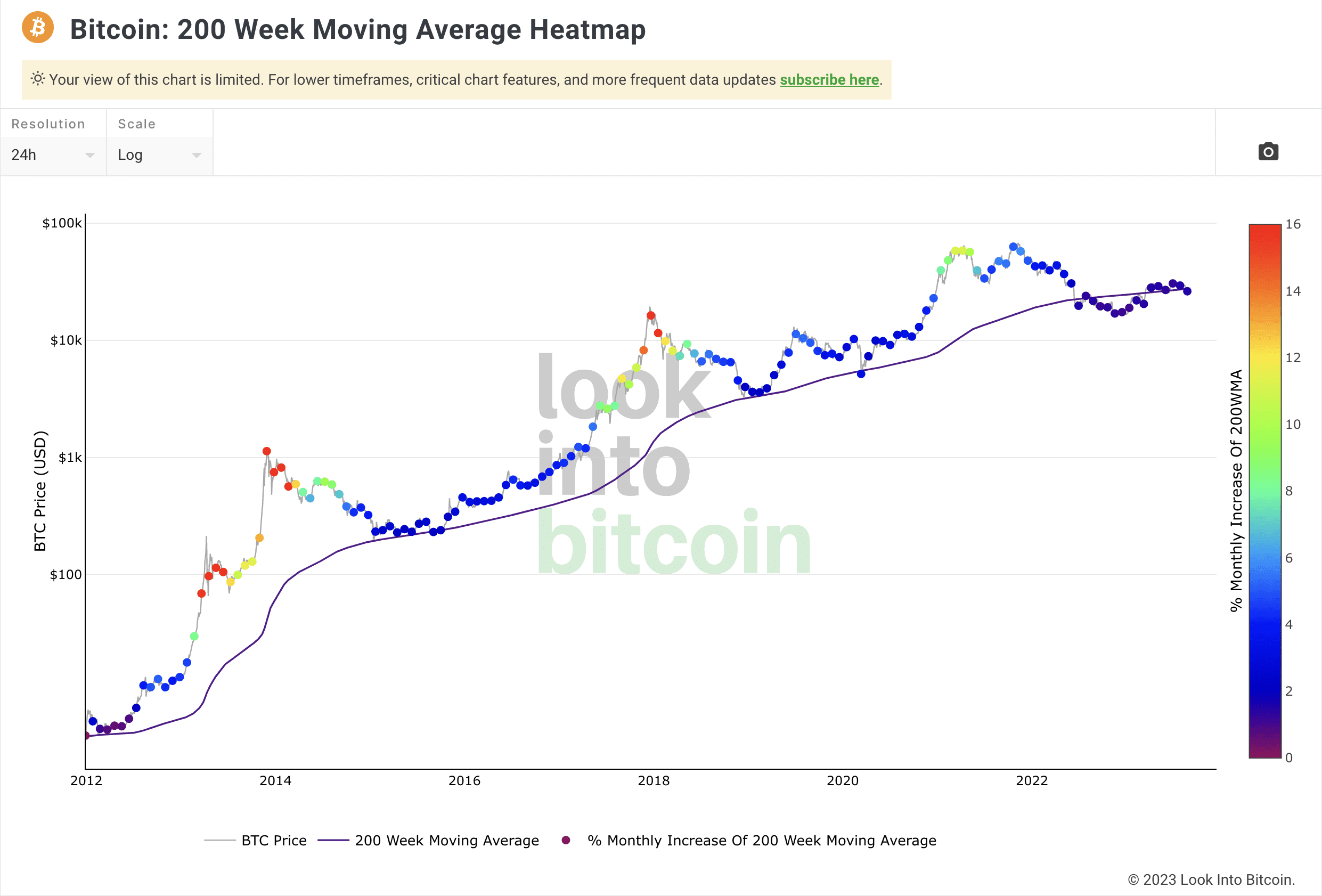Bitcoin Price Models Compared & Their Accuracy: Is Bitcoin a Bargain?
A deep dive into various Bitcoin price models that exist and their accuracy.Can Bitcoin Price Models Indicate Whether Bitcoin a Bargain?
Introduction
On 6th September 2023, we published a mega article titled ‘Detailed Analysis of Projected Bitcoin Prices During 2023, 2024, 2025 & the Impact of the 2024 Halving‘, which came in at a whopping 10K words or more. Intended to be an in-depth exploration of all factors impacting the price of Bitcoin, we received feedback that the article would be best served as smaller dedicated guides.
This guide titled ‘Bitcoin Price Models Compared & Their Accuracy: Is Bitcoin a Bargain?‘ is part of the series focusing specifically on some of the most popular Bitcoin price models that exist and how well they have managed to predict Bitcoin’s price. We’ll look at models such as Stock-to-Flow (S2F), Lengthening Cycles, Halving-based Cycle, 4-Year Cycle, and others including the Rainbow Chart and 200-Week Moving Average, then conclude with the central question of ‘Is Bitcoin a bargain?’.
If you would like to jump to one of the articles, please visit below:
- Bitcoin Halvings & Future Bitcoin Price Prediction – 2024 Halving (Before & After) & 2025
- External Factors that Impact The Price of Bitcoin: Influencers & Influences
- Bitcoin Adoption, Holders & Power Players: Can Bitcoin Make Millionaires out of Randomers?
The Stock-to-Flow (S2F model) Bitcoin price model
The first and probably most well-known Bitcoin price model is PlanB’s Stock-to-Flow (S2F) model.
The model illustrates the influence of Bitcoin halving events on its valuation. The core premise is that an asset’s value increases with its rarity with the Stock-to-Flow metric being determined by dividing Bitcoin’s existing supply by its new supply.
We’ve provided a detailed overview explaining Bitcoin halving events and price predictions here. It’s a large topic in its own right and provides some useful background to understanding the S2F model.
The “digital gold” scarcity factor
Bitcoin, like gold and silver, is considered scarce and difficult to produce. The concept of “unforgeable costliness” refers to the difficulty of producing an asset. Bitcoin and gold exemplify this due to the challenges and costs associated with their production.
Unlike fiat currencies, which can be printed in excess, Bitcoin has a capped supply of 21 million. This scarcity, in contrast to fiat money, has made Bitcoin a valuable store of value.
The current BTC supply is approximately 19 million (around 90% of the total to be minted) with an annual flow of 328,500 BTC. This gives an S2F ratio of 57.712, meaning it would take 57 years to mine the total BTC supply, excluding the maximum supply and halvings.
Bitcoin undergoes a halving event every 210,000 blocks, where the reward for mining is halved, increasing its scarcity. The next halving is set for 2024.
Different types of S2F models and their accuracy
There are a few different types of the S2F model including:
- Stock-to-Flow on Bitcoin: This model values Bitcoin based on its scarcity. It has been relatively accurate in predicting the price of Bitcoin, especially around halving events.
- Stock-to-Flow Cross-Asset Model: This model considers other scarce assets like gold and silver in addition to Bitcoin. It aims to value all similar assets, swapping time with other assets in its formula.
- Floor Model: An alternative to the traditional S2F model, the Floor Model is based on various technical tools like the 200-day moving average. PlanB utilised the Floor Model to predict Bitcoin’s closing prices in 2021. While some predictions were accurate, like August’s price of $47k and September’s $43k, others, like November’s nearly $100k, were off-mark and ultimately a “fail“. Despite this, PlanB stated that the S2F model remains valid.
Floor model $98K Nov close will probably be a first miss (after nailing Aug, Sep, Oct). S2F model not affected and indeed on track towards $100K. pic.twitter.com/QO3bRUoGo3
— PlanB (@100trillionUSD) November 25, 2021
Let me be clear:
1) Nov98K & Dec135K miss = FLOOR MODEL FAIL
2) Dec100K miss: I have said earlier that if BTC<$100K Dec2021, then S2F is “off the rails” “invalidated” “dead”. Tbh that was an ill attempt to clarify “$100K average this cycle” & regression analysis. S2F MODEL INTACT pic.twitter.com/LRdfLinTm4— PlanB (@100trillionUSD) December 24, 2021
For many who have followed the S2F model, the predictions for $100k in 2021 seemed realistic, but this of course didn’t happen. Instead, we had environmental concerns, crackdowns, crashes, legal battles, and a war. More on this later.
As things stand as of September 2023, below represents the current position against the S2F model. If one thing jumps out from this picture, it’s that Bitcoin appears to be a bargain, compared to the S2F valuation. However, with this new edit, it’s now November 2023 and prices have jumped from ~26K on 1st September to ~37K on 12th November 2023. That’s a 42% increase in less than two months and we are still well under the S2F model projection, so it would appear Bitcoin is still a bargain.
#Bitcoin August closing price: $25,932 pic.twitter.com/p4FpiOnsDn
— PlanB (@100trillionUSD) September 1, 2023
S2F $100K Bitcoin in 2023?
PlanB recently suggested that the S2F model indicates a Bitcoin price of $100k by 2023. Despite some deviations from the model’s predictions, supporters believe the upcoming halving in 2024 could boost Bitcoin’s price due to reduced supply, meaning a slight delay in hitting the target.
Both S2F and logarithmic regression point to $100K in 2023. pic.twitter.com/NHqoRpEmUl
— PlanB (@100trillionUSD) February 14, 2022
We mentioned before the short-term impact of external events and influences. Just like these can harm the price prediction of models like S2F when something damages confidence, like a war or pandemic, the opposite can happen when there’s good news.
Currently, with the anticipated approval of a Bitcoin spot ETF and the upcoming 2024 Bitcoin halving event, confidence is high.
We’ve gone from ~26K on 1st September to ~37K on 12th November 2023. The price increase over the past 30 days has been 36%, so if we simply extrapolate this to the end of 2023 assuming the same rate of growth, we’ll be at around 66K. However, if a spot Bitcoin spot ETF gets approved before then, who knows… We may very well see a 100K price by the end of 2023.
This is the magic of Bitcoin price models like S2F. When you zoom out, they bypass the positive and negative short-term impacts of external events and provide an often reliable average.
Critics of S2F
Some critics argue that the S2F model might just be a coincidence and that markets should not be predictable.
Ethereum founder Vitalik Buterin mentioned that while the S2F model might not be wrong, its true accuracy is uncertain. Nico Cordeiro, the chief investment officer at Strix Leviathan LLC, critiqued the model, suggesting it might be a “chameleon model” that appears accurate initially but is flawed upon deeper inspection.
The model has faced criticisms like these for its ambitious predictions. For instance, based on the S2F model, by 2045, the price of one Bitcoin would be $235,000,000,000, which many consider unrealistic.
Our view on S2F
The S2F model has been relatively accurate in its price indications for Bitcoin to date. Our opinion is that the predictions and trends still hold true, especially when zooming out. Quite often what we see as a failure in the model, is simply a delayed effect due to macroeconomic factors and external factors.
Like all models, the S2F model doesn’t account for factors such as demand or volatility, or external factors including regulatory crackdowns, ETF approvals, wars, economic changes, or large-scale liquidations by whales, all of which can lead to significant price fluctuations in the crypto market.
So, whether $100K happens in 2023 or before/after the halving in 2024:
“It will happen”.
Other Bitcoin price models
There are various theories and Bitcoin price models, one being the S2F model which is based around the halving events.
There are however other models and theories worth mentioning, such as:
- Lengthening Cycles Theory
- Diminishing Returns Theory
- Halving-based Cycle Theories (e.g. S2F)
- Elliott Wave Theory
- Hyperwave Theory
- 4-Year Cycle Theory
A shout out to Ben Cowen (intothecryptoverse.com) who we’ve been following on YouTube for a long time.
Lengthening Cycles Theory
The premise is that each Bitcoin cycle is longer than the previous one. The idea is that as Bitcoin matures and gains more adoption, its price cycles extend in duration.
Cowen had long been a supporter of the lengthening cycles theory, claiming that
- The Bitcoin market experiences distinct cycles involving accumulation, dynamic upswings, and rapid declines
- Subsequent cycles are characterised by extended durations
- Successive cycles result in diminishing returns on investment (ROI)
Cowen has passionately advocated for this hypothesis since at least 2019, basing his conviction on its strong alignment with historical data.
We observed an intriguing dialogue that transpired in August 2021, where Cowen engaged S2F’s PlanB on YouTube:
However, in 2022 Ben admitted that his flagship market model, the “lengthening cycles,” was no longer valid:
#Bitcoin Lengthening cycles is dead. Bear market has been here for months and will likely continue to rage on for a while.
Let’s hope this is a macro bottom signal, but I don’t think it is.
— Benjamin Cowen (@intocryptoverse) May 7, 2022
This admission came in the context of Bitcoin’s falling price. He mentioned that even if Bitcoin were to hit a new all-time high before the next halving, it wouldn’t change the current bear market’s brutality.
Many supporters of the lengthening cycles theory were taken aback by Cowen’s admission, with some expressing disbelief, while others praised him for his honesty and self-criticism.
Diminishing Returns Theory
Despite the rejection of the lengthening cycles theory, Cowen still believes in the idea of diminishing returns in future Bitcoin cycles. He also mentioned that the logarithmic regression bands, another element of his model, remain valid.
Halving-based Cycle Theory
Like, S2F, these theories are based on the Bitcoin halving event, which occurs approximately every four years. They suggest that this reduction in reward leads to less supply entering the market, which in turn drives up prices. The expectation is that this cycle will repeat indefinitely.
Elliott Wave Theory
This theory is used by technical analysts to determine market cycles. It identifies both bearish and bullish cycles based on the assumption that the market moves according to crowd psychology. The theory is often criticised for its subjectivity.
Hyperwave Theory
This theory identifies potential market bubbles. It is a seven-part market cycle that identifies a bearish trend reversal typically at a peak. The theory often leads to extreme price predictions, especially for bearish scenarios.
4-Year Cycle Theory
This theory is closely related to the Bitcoin halving event, which occurs approximately every four years. The theory suggests that Bitcoin’s price follows a predictable four-year cycle, with each cycle consisting of a bull market followed by a bear market.
The bull market often peaks around the time of the halving or shortly after, driven by the reduced supply of new Bitcoins entering the market due to the halving of block rewards. After the peak, a bear market ensues, bottoming out just before the next halving event, after which the cycle repeats.
This cyclical pattern is believed to be influenced by the halving’s impact on supply and demand dynamics.
All models are wrong. Some are useful
Coming back to Cowen, with his rejection of the Lengthening Cycles theory, he believes this might allow the cryptocurrency market to enter a more mature phase, often emphasising that “All models are wrong. Some are useful.“
Bitcoin halvings and their role
Whichever Bitcoin price model you consider, the price has historically changed the most with halving events.

Bitcoin halvings and price change before and after. Source – Greyscale
The above chart from Greyscale provides a very clear price pattern surrounding the halving events. While we’re not covering that in depth in this article, the chart presents data that back’s up Pan B’s view below.
Plan B’s view
This tweet from PlanB provides his take on things and shows Bitcoin at a considerable discount using S2F.
His comment below certainly stacks up with the data we’ve analysed and would seem to be a winning strategy based on the past data and events surrounding Bitcoin:
“Buy 6 months before the halving and sell 18 months after”.
[Buy bitcoin 6 months before a halving and sell 18 months after a halving] has historically beaten [buy&hold]. The next halving is in April 2024 … will this strategy work again?https://t.co/9kjaCUulwb pic.twitter.com/cbO80Ym7iC
— PlanB (@100trillionUSD) July 3, 2023
The Rainbow Chart ($38K to $420K by the end of 2025)
This beautiful chart shows a very compelling trend highlighting whether Bitcoin is a bargain or expensive. Right now, it’s:
Basically a fire sale!

The Bitcoin Rainbow Chart. Source – Blockchain Center
The below shows the price range expected at the next Bitcoin halving with $38K to $420K by the end of 2025.

Rainbow Chart price predictions for 2024 Bitcoin halving
The 200-Week Moving Average (200-week MA) heatmap chart
Widely considered that Bitcoin corrections tend to happen at the 200-Week Moving Average, much like the Rainbow Model, this would imply we’re at the bottom of Bitcoin’s price band and heading back up.

The 200-Week Moving Average for Bitcoin 2023
This 200-Week Moving Average (200-week MA) for Bitcoin offers an insight into its price trend by averaging its value over 200 weeks, creating a consistent line that highlights overarching market directions and possible points of support or resistance.
This metric is valued for its ability to give a broader perspective on the price trajectory of Bitcoin, minimising the impact of short-lived price swings. When the price of Bitcoin surpasses the 200-week MA, it’s typically viewed as a sign of long-term growth. This is what we are witnessing at this very moment.
All things considered
The above Bitcoin price models all point towards a very promising future for Bitcoin and rewarding times for those who stay strong. However, if still in doubt, the safest decision is always to stay away and stick with what you know.
Can Bitcoin models be trusted? The macro vis micro view
We mentioned before that S2F’s previous prediction of $100k in 2021 seemed realistic at the time when taking a macro view. But then we encountered environmental concerns over Bitcoin mining, crackdowns, exchange crashes, legal battles, and a war. The micro view was that Bitcoin price models like S2F had failed and Bitcoin was doomed.

Bitcoin price – the macro vs micro view
The thing with these models is that they only work when zoomed out and taking a macro view. This allows us to look at the ‘big picture’. However, it can be a completely different picture when we take a more focused and micro view, especially when we are impacted by external events and influences (covered here). Much like the long-term role halving events play in terms of Bitcoin prices, external events and influences play an equally significant short-term role and can throw any predictions made by models like S2F out of the window.
Best Bitcoin price model for accuracy compared?
In our halvings article, we make a Bitcoin price prediction of $244K 18 months after the 2024 halving.
This prediction was largely based on our own data and models which we don’t cover here, including Averaging, Polynomial Regression and Exponential Growth models. These all provide an alternative way of predicting the future price change.

Analysing Bitcoin price models
However, if we stick purely to the Bitcoin price models covered in this article, these main show historical trends and try to project how that trend will continue. The three that stand out are S2F, the Rainbow Chart and 200-Week Moving Average:
S2F model
This is the model that’s most geared towards plotting and predicting the price of Bitcoin. It shows Bitcoin’s actual price against the S2F projected price according to the halving cycles. Evaluating the accuracy of the S2F, we can make a few observations:
- Historical alignment: The S2F line and the actual price data appear to align closely in several periods. Just looking by eye, these appear to be aligned more often than not, suggesting the model has tracked the actual price of Bitcoin well.
- Halving events: The model has been closest to the actual price of Bitcom in the immediate months surrounding halving events, showing a general price increase as each halving event approaches and a greater increase after each halving.
- Volatility and divergences: There are also clear periods where the actual price deviates significantly from the S2F model, often attributed to external events and factors, such as market sentiment, regulatory news, technological developments, and macroeconomic factors that the model cannot incorporate.
- Logarithmic scale: The use of a logarithmic scale can visually compress large price movements, making the fit between the model and the actual price appear closer than it might be on a linear scale.
- Long-term trends vs short-term fluctuations: The S2F model appears to follow the long-term trend of Bitcoin’s price reasonably well but does not account for short-term fluctuations and market dynamics.
Rainbow Chart
The Rainbow Chart is a logarithmic regression chart that is intended to be used more as a qualitative tool, offering sentiment-based guidance rather than a predictive model. Its colour-coded sentiment indicator overlays the Bitcoin price and suggests buying or selling strategies based on the price’s position within the rainbow bands, so unlike S2F there’s no single line to compare against.
- Historical Alignment: The price of Bitcoin has fluctuated within the rainbow-coloured bands, but if we take the middle yellow band (‘HODL’) for example, the price of Bitcoin has aligned to this band fairly infrequently.
- Divergences: The bands that seem most aligned over time are actually the divergences from the middle band, i.e. ‘Buy’ and ‘Firesale’, indicating that the sentiment is to buy more often than sell. There have been relatively few periods where the price has touched or moved closely to “Maximum Bubble Territory”.
200-week MA average chart
The 200-Week Moving Average heatmap is a more data-driven approach that provides a visual representation of market sentiment over time, with colours indicating the rate of price increases. The chart can be seen as an indicator of long-term market trends and is not directly comparable to the S2F model.
- Historical Alignment: The heatmap dots, which represent the percentage increase over the 200-Week Moving Average, tend to follow a cyclical pattern, aligning with the underlying moving average line. Unlike S2F, the historical price of Bitcoin has only touched the 200MA on a relatively small number of occasions and mostly suggests a bottom.
- Volatility: The colour gradient of the dots indicates periods of higher and lower relative price increases, suggesting that while the moving average provides a general trend, it doesn’t capture short-term volatility or the majority of Bitcoin’s actual price.
Comparison
Both the Rainbow and 200-Week Moving Average charts offer insights into the price trends of Bitcoin but differ from the S2F model, which is predicated on the scarcity and reduction of supply over time due to halving events. Neither aim to predict the price with the same methodology as the S2F model, and their accuracy can’t be calculated in the same way. They instead offer different lenses through which to view past market behaviour.
For a model that attempts to provide a forward-looking price prediction based on a quantifiable metric, we would consider the S2F model to be the best out of the three. It’s important to note however that none of the models can guarantee accuracy, and we would always advise looking at a range of different models and getting professional advice before making investment decisions.
Other factors worth mentioning
Market cap: a key indicator in Bitcoin price prediction
The market cap (market capitalisation) of any crypto asset is a crucial metric that can’t be overlooked, especially when discussing Bitcoin price predictions. The market cap, essentially the total value of all Bitcoin in circulation, offers a broader perspective beyond just the current market price of Bitcoin. This figure is obtained by multiplying the current market price by the total number of Bitcoins in circulation.
Understanding the market cap is vital for investors, as it not only reflects the size and health of the Bitcoin market but also provides insights into the potential future price movements. For instance, a rising market cap might indicate growing investor confidence and a potential increase in the future price of Bitcoin, and alternatively, a declining market cap can signal a loss of faith in Bitcoin, possibly leading to a drop in its average price.
The relationship between the market cap and the Stock-to-Flow ratio is particularly interesting. The Stock-to-Flow ratio, which measures the scarcity of Bitcoin, directly impacts its market cap. The ratio increasing indicates that Bitcoin is becoming scarcer. When this happens, we often see a corresponding rise in the market cap, reinforcing the positive outlook for Bitcoin’s future price.
Trading Bitcoin and the dynamics of crypto assets
Trading Bitcoin and other crypto assets is a complex topic and not something we’ll cover in detail, but it’s worth a mention given the subject of this article. Crypto trading is influenced by numerous factors, including market cap, average price, and the overarching trends in the crypto markets.
When trading Bitcoin, it’s important to consider the historical Bitcoin price cycles, which often reflect the market’s sentiment and can guide trading strategies. Crypto assets, like Bitcoin, are often classified as risky assets due to their high volatility and susceptibility to rapid price changes. However, this very characteristic also makes them attractive to traders and investors looking for high returns. The average price of Bitcoin over time can be a useful metric for traders to determine entry and exit points in the market.
In addition to the average price, the market cap of Bitcoin provides traders with a sense of the overall health and size of the crypto markets. A rising market cap typically indicates a bullish sentiment in the crypto markets, suggesting that more investors are entering the market and pushing up the average price.
Is Bitcoin a Bargain right now?
While the three models covered above give us a different perspective on the price of Bitcoin, they all agree on one thing:
It’s a bargain right now!
The current convergence with the 200-Week Moving Average with Bitcoin’s price suggests a bottom.
The Rainbow Chart puts us clearly in the buy/accumulate phase.
The S2F model highlights that we are close to the next halving event but still significantly under the projected value of 113K at the current point of writing. This would put Bitcoin at a discount of close to ~67% right now.
All of these factors point to the fact Bitcoin is still a bargain, even despite its recent price increase of 36% over the past 30 days.
DISCLAIMER – Always consider consulting with a financial advisor or doing more comprehensive market analysis before making investment decisions.
Last modified on: December 24, 2025
Latest Posts

GPU Mining, ASICs & Decentralisation Explained
IntroductionMining cryptocurrency has become a popular way to participate in the crypto and blockchain space while...

Basic Economics & Cryptocurrency Valuation
Why I've Written This Article? One of the most common, and most frustrating, objections (misconceptions) that I hear...

About CryptosRUs and Into the Cryptoverse
This post exploring CryptosRUs vs Into the Cryptoverse for free crypto advice is a little different to others we...

From Everyday People & General Adoption to the Bitcoin Elites: Who Will Benefit the Most?
IntroductionOn 6th September 2023, we published a massive article titled ‘Detailed Analysis of Projected Bitcoin...
Contact us to order your crypto mining rig today
Address
Opace Ltd t/a Crypto Mining Solutions, Park House, Bristol Rd South, Rubery, Birmingham, West Midlands, B45 9AH. UK
Phone
0845 017 7661


Wow, these Bitcoin price models are mind-boggling! Can they really predict if its a bargain? 🤔
These models only show data and predictions, they are no guarantee and it’s misleading for people to follow them and expect big returns.
100% agree about guarantees, although the models are all based on previous data/patterns of one kind or another and allow reasonable estimates/predictions in my opinion. When zooming out and looking at Bitcoin’s entire history, the S2F model in particular shows a very similar pattern surrounding each halving event. The important thing is to do research, look at a variety of models and information, then make an educated decision. But never risk more than you can afford to lose.
Bitcoin is just a digital fad, it will never truly hold value like gold.
Being in the crypto mining industry, I obviously disagree that Bitcoin’s a fad and can give many reasons why, but gold is a good hedge too. I would always advise diversifying your investments and gold will always be a safe bet.
Im not sure if I should trust these price models. The future is unpredictable anyway but bitcoin exceeding 200K soon seems laughable
Please don’t trust them, as they’re just that, i.e. models. Please DYOR. In terms of our own price prediction, we’ve used a range of different Bitcoin price models along with our own research and experience.
Who needs gold when we have digital scarcity? Bitcoin is the new king!